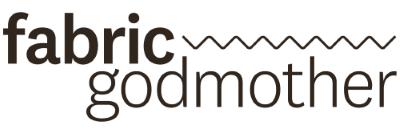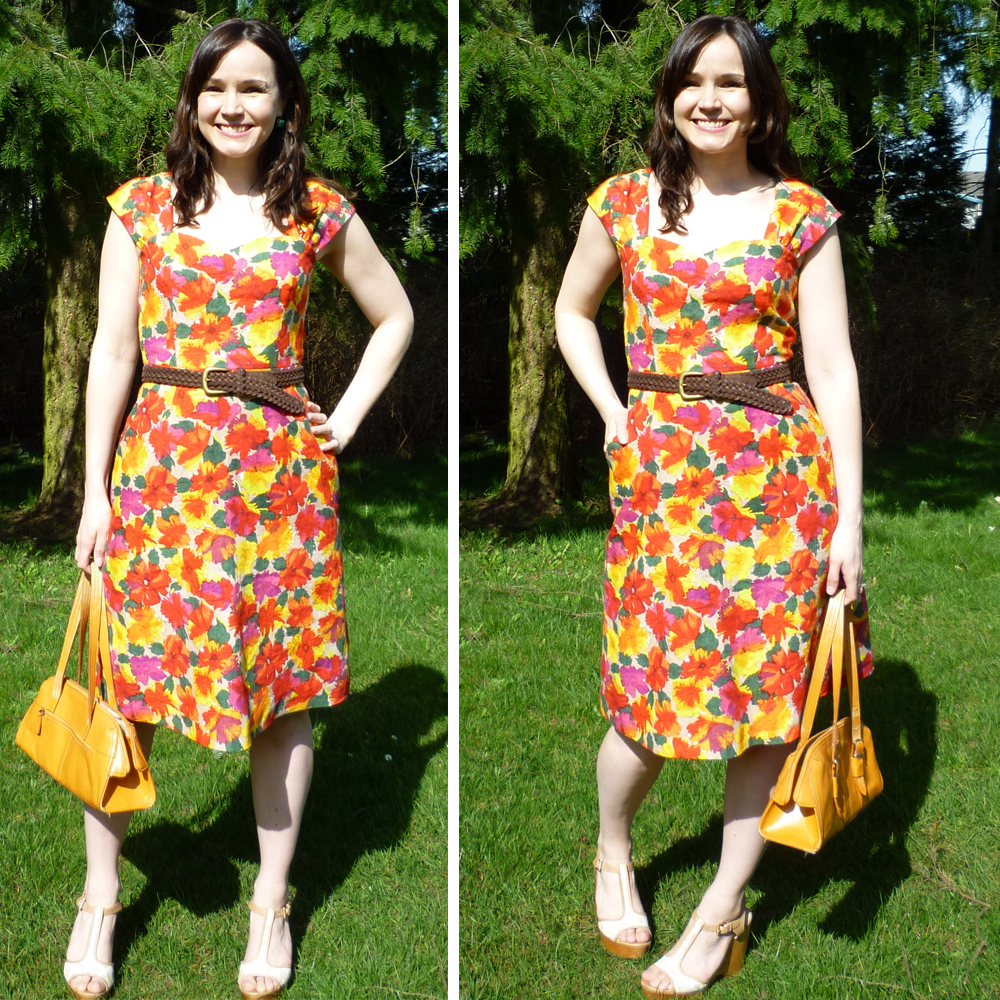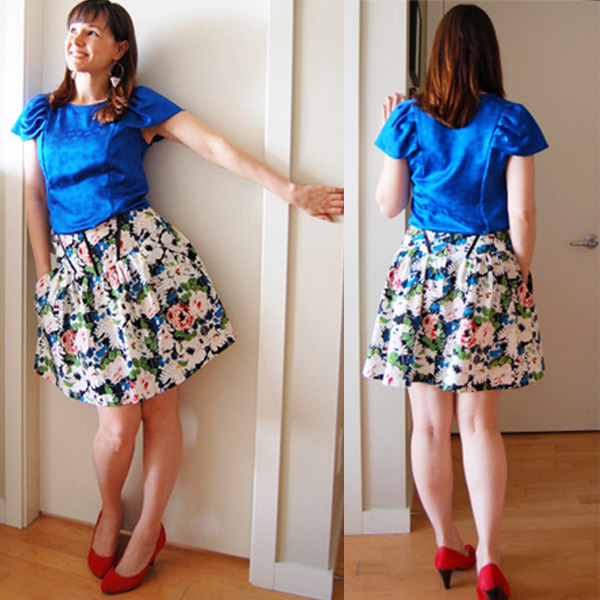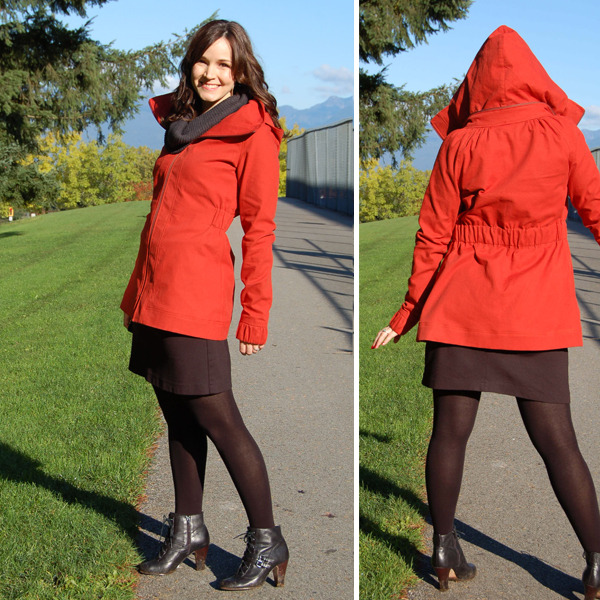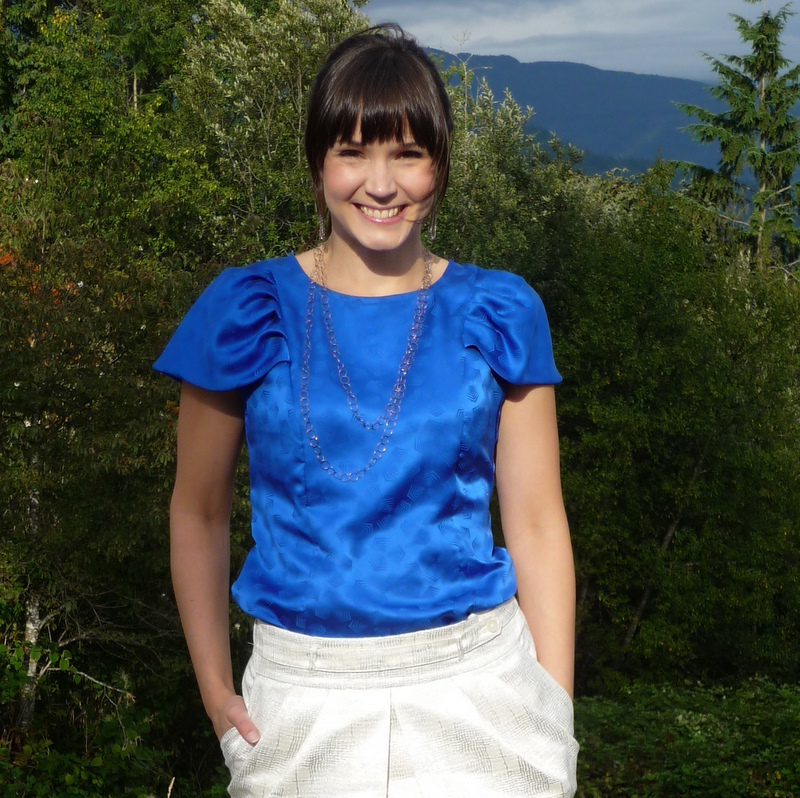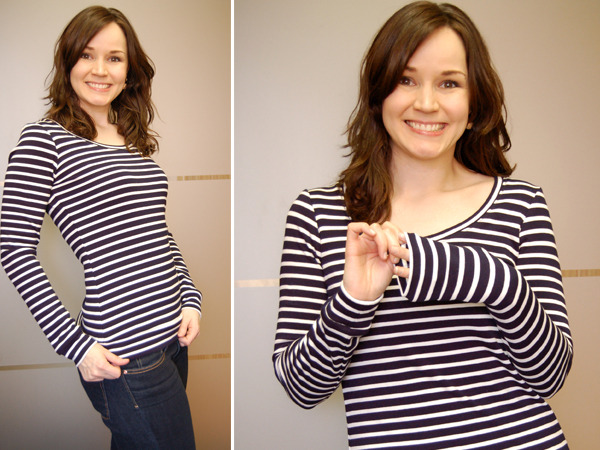Interview with Tasia from Sewaholic Patterns
Posted by Fabric Godmother on 1st Jan 1970
I recently spent a bit of time asking the wonderful Tasia from Sewaholic patterns a bit about herself and what inspires her. Here are her answers.
When did you first learn to sew?
I learned when I was about eight years old, gathering my mom’s fabric scraps and using them to sew up Barbie clothes. My Barbie was super-stylish, wearing suede skirts, capes, and all kinds of crazy outfits I dreamed up for her. I was mostly self-taught with guidance from my mother, who let me experiment on her old Bernina machine. Experimenting and learning on your own leads to some interesting techniques – for example, I thought you could sew in reverse if you felt like it! The Bernina had a backstitch switch instead of a button, so you could sew entirely in reverse if it seemed easier to attack the seam from the bottom up. Who knew that wasn’t proper technique? I furthered my sewing education by taking sewing every year in high school, and often skipped my academic classes to hang out in the sewing lab. After graduation, I completed a four-year degree in fashion. I loved learning how to construct garments, factory-style, which influences how I write the instructions in my sewing patterns!
· You design for pear shaped women, what was the inspiration behind this?
Because I knew I couldn’t be alone! I found it frustrating to constantly alter patterns to fit wide hips and a narrow waist. Often by the time I got the pattern to fit, the design lines didn’t look good anymore and the proportions were all off. If this was challenging for me, someone who’s been sewing for years, imagine how frustrating it would be for a beginner. When I did my research, over twenty percent of women fall into what we call a ‘pear’ shape. That’s a lot! I wanted to make smartly-designed patterns for pear-shaped women that were designed to fit and to flatter our figures.
· Who or what inspires your designs?
Inspiration comes from so many places! Often it’s the problems that come with sewing or fitting. Frustrated with sewing knit fabrics and getting a professional finish? I made a knit tee shirt pattern that’s finished with tidy bands, instead of ripply hems. I’m inspired to create designs that are pretty, wearable and practical. My dresses and skirt patterns include pockets, my jacket pattern has a hidden hood and interior pockets, and my blouse pattern has no closures! Design is about more than just a pretty garment. I think about the sewing experience, whether it’s simple and interesting to put together, and whether the finished garment is easy to wear.
· What is the process you go through to design a pattern? How do you start?
I start with one main idea – a knit top without hems, a blouse without zippers or buttons, a jacket that’s flattering and practical – and start working out the details. Say we’re designing the Renfrew top – what kind of necklines would be most flattering? How many options should there be, to provide good value in the pattern? I start working out the specifications – there should be at least a long sleeve and one other sleeve length, possibly three sleeve options, cowl necklines are really flattering on pear shapes, and so are V-neck and scoop necklines – and sketch out some ideas. With sewing patterns, I have to figure out not only the look of the garment, but also how it will go together! Will it be easy to sew, or a real pain in the neck to construct? How many pattern pieces will there be? There are tons of questions at the start of developing a new pattern! Next comes the first pattern and sample, to see if the ideas look good once they’re translated to a three-dimensional model. I try it on – is it flattering? Is it a design that people will be drawn to, and want to make more than once? How about the design options – should there be more variations to the pattern? Once I’m happy with the pattern, it gets graded into different sizes, instructions are written and sewing diagrams are drawn. Then it goes to testing! I love this part, as I get real-life feedback from potential customers who will tell me honestly if the pattern was fun to sew or not, and if they’d buy it or recommend it to a friend. Plenty of great improvements happen during the testing period! After testing, changes are made, and all of the little bits and pieces are compiled to create the pattern envelope, pattern instruction sheet, and the actual pattern pieces.
· What does the future hold for Sewaholic?
Exciting things! I have many new patterns planned this year. People have been asking me for a trouser pattern, because pants certainly are the hardest thing to buy in stores! A modern-yet-classic trouser pattern is in the works for this year. I’m planning a few more patterns that work for the office, because like it or not, we all need to work! The workday is more fun if you’re wearing clothes you love and feel great in. I’d love to get Sewaholic Patterns into more retail stores, and I plan to keep building up the tutorials and tips on the Sewaholic blog to make it an even better resource!
· A little bird tells me that you used to play the bagpipes? Tell me about this?
Ha! Yes, I did play the bagpipes! I started playing as a teenager in cadets, because when I played the clarinet, I wore pants and marched in the back row... but the pipers were in the very front row and got to wear bright tartan kilts! I wanted to be there! So I took up the pipes and played in several bands in my teens and early twenties, from an all-ladies band that wore ruffled blouses and heels, to a police band that only recently allowed women to join. I competed in solo competitions, and even travelled across North America, Scotland and Portugal to play. I’ve packed the pipes away now, but it was a wonderful experience!
· What is the best part of your day?
The best part of my day is my bike ride in to the office, and the moment when I first arrive. What will the day hold? What exciting things are waiting for me in my inbox? When the day is just beginning, it’s full of opportunity! The best part of running this business is when I announce a new pattern. I’m nervous like the moment before a first date. Will they like it? Will people start placing orders right away? Creating something and putting it out there is both scary and exciting. I love reading the comments and responses to each new pattern. The online sewing world is incredibly supportive and encouraging of new designers and small businesses!
· What is the hardest thing when running your own business?
The hardest thing is getting over your fears. It’s perfectly normal to be afraid when running a business – at least I hope it is! Going out on your own is a massive step, and there are times when you’ll feel alone and unsure of whether you’re doing the right thing. All kinds of hurdles will come up, and you’ll have to handle them with style and grace. I wish I had a brilliant suggestion for doing that, but all I can say is that every challenge is a learning experience and an opportunity to make things better. (And dealing with scary things gets easier the more you do it!)
· How do you switch off at the end of the day?
It’s certainly a challenge! I cycle to work, so I have a good forty minute bike ride to slow down my mind. When you love what you do, it’s always on your mind. To distract myself, I love to knit and find it very calming. I’ll knit something complicated when I need to keep my mind occupied, knit something simple when I need to relax. I also love going for walks and hiking. Fresh air is great for clearing the mind!
· In your blog you describe your sewing as too much frosting not enough cake, what does this mean?
Frosting is the bright and shiny things in our closets, the sequinned tops and bold floral dresses. Cake is the substance, the black trousers that go with everything or the perfect denim jacket. I love to sew frosting, I gravitate to the shiny in the fabric store and whenever I see a new pattern, I picture it in hot pink or big polka dots! Which is all fine and well, but it can be a problem when you have the most fabulous printed blouse that goes with nothing else you own. It can also be troublesome if you plan to sew your entire wardrobe, like me, and never end up making those classic pieces that work with the frosting!
·
You followed your dream of being able to sew every day, what advice would give anybody else out there thinking of following their dreams?
I would say figure out what following your dream means to you, and what you want to get out of it. I wanted to create patterns and share them with the world, because I felt like I had something to offer. I also wanted to sew every day, although I don’t always get to do that as things get busier! It feels great to help people with sewing techniques on the blog, and even better when everyone jumps in to share their own tips in the comments! I love that I can sew my own clothing in whatever colours and styles I love most, regardless of what’s in fashion or what’s stocked in the mall stores. It’s liberating, really! That’s what I hope to share through what I do. So if you have a dream, what does it look like? What do you hope to accomplish? And then, find ways to get closer to your dream. I was lucky that I was laid off from my full-time just as I was ready to start my own business, which gave me the push I needed to pursue my dream. Maybe you don’t need it to be quite that drastic. Take a course, start your business on weekends, do your research, and the rest will follow.
· What is your top sewing tip?
Experiment! The absolute best way to start figuring things out is to experiment with fabric. Sew lots, sew all kinds of things, and embrace mistakes as learning experiences. Don’t be afraid to try. Find ways to learn that work best for you. Would you prefer to read sewing books and have them on hand for reference? Would you prefer to watch videos and see techniques in action? Maybe you need one-on-one instruction to really understand new concepts. One thing’s for sure, you never stop learning. I’ve been sewing for over twenty years (wow that makes me feel old!) and I am still learning new techniques or ways to improve my sewing skills!
